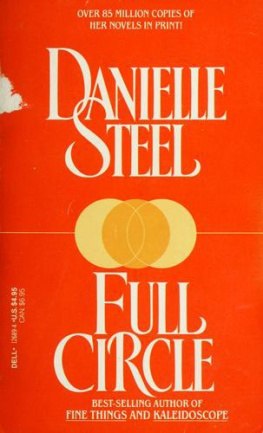Published by The History Press
Charleston, SC
www.historypress.net
Copyright 2017 by Danielle Teigen
All rights reserved
First published 2017
e-book edition 2017
ISBN 978.1.43966.209.0
Library of Congress Control Number: 2017938339
print edition ISBN 978.1.46713.659.4
Notice: The information in this book is true and complete to the best of our knowledge. It is offered without guarantee on the part of the author or The History Press. The author and The History Press disclaim all liability in connection with the use of this book.
All rights reserved. No part of this book may be reproduced or transmitted in any form whatsoever without prior written permission from the publisher except in the case of brief quotations embodied in critical articles and reviews.
ACKNOWLEDGEMENTS
Writing this book actually started years ago, when I was a child dreaming of becoming an author. Through the years, many people have contributed to this dream becoming a realitywhether that was my parents for reading the stories I would write on long car rides, my high school English teacher who encouraged my writing ability or college professors who nurtured my skills.
This book has been a labor of love, both in terms of the topic and the time it took to put everything together. Even though I am a native South Dakotan, I have thoroughly enjoyed researching Fargos history. I must thank former NDSU archivist Michael Robinson for his ceaseless assistance while researching for other projects because his excitement and expertise fueled my love of Fargo history.
Im grateful to my co-workers at Forum Communications for their support and interest in my work, as well as friends and family members who supported my work and were intrigued by stories I was telling.
The process of writing a book is strenuous and requires a great deal of time and focus. I am forever grateful to my husband, Kevin, for his endless enthusiasm for this project and his understanding about the commitment necessary to accomplish this feat. Thank you for your input, feedback and valuable edits.
When deciding what to include in this book, I tried to consider pieces of Fargos history that many people might not know much about, but I realize that Fargos history is a rich tapestry of stories about countless people whose contributions to its establishment should be acknowledged. This book is not meant to be comprehensive; it is a mere sampling. Far more prolific historians than I have documented Fargos incredible history, and I have attempted to honor their work through mine.
Part I
Introduction
In January 2015, the Fargo-Moorhead Convention and Visitors Bureau unveiled a rebrand of its organization and, essentially, the community. Instead of eschewing the distinction of this place and its peoplethe cold, the friendliness, the folksy naturethe CVB embraced it. Highlighting qualities like ingenuity, creativity, quiet strength and innovation, the organization single-handedly captured the energy of the area by describing in detail just what makes this place so different: were fiercely independent and naturally gregarious. Were down-to-earth and intensely innovative. The Fargo-Moorhead community demonstrates a vitality and momentum only seen in large metropolitan areas. Its why the organization adopted the tagline North of Normal to embrace the notion that Fargo and its residents are something exceptional.
What does all of this have to do with a history book about Fargo?
Because the same qualities that set the community apart now in the twenty-first century emerged nearly 150 years ago when Fargo welcomed its first citizens. Those pioneers were the true innovators because they built a thriving community from the dust of an unsettled prairie using only their own resourcefulness and determination.
This is a hidden history of Fargo, but history is rarely truly hidden. People just dont know where to look. For the quickest history lesson, go to downtown Fargo. Then look up. There, in the stone faades of some of the oldest buildings in the city, youll see names etched in stonenames of the business moguls who came to this city with nothing and left as legends. But you wont see the names of every individual who left an indelible mark on the city in its early years; those stories are the ones truly hidden.
Fargos hidden history has always been in plain sight; most just dont take the time to learn it.
Im honored that youve taken the time. You wont be disappointed.
Chapter 1
WHATS IN A NAME?
All the Ways Weve Called Fargo Home
Fargoans can thank the railroad for their city. As the Northern Pacific (NP) Railroad crept westward, government officials realized the need to stake claim to create cities where rail stops would be. Having a stop at the crossing of the Red River was looked upon by nearly every one as of great importance because the city had the potential to become head of navigation on that stream and was located in the center of a very rich agricultural district.
But the NP knew settlers were watchingand waitingto see where the new towns would be placed so they could snatch up the land. Settling Moorhead turned into a gold rush, not for gold-bearing lands, in the literal sense, but land on which they hoped to build sizeable fortunes.
Eager would-be Moorhead residents bought up sections of land where they thought the railroad would cross the river, not realizing the government had already secured the Moorhead site clandestinely. But the land company was finally forced to sell its Moorhead site at reduced prices to the settlers who had bided their time and finally achieved their goal. The location of Fargo is a direct part of the story of the location and settlement of Moorhead.
As a government agent, Thomas Canfield was tasked with staking Moorhead, and he learned his lesson when he was later assigned to site Fargo. Early on, Canfield thought Moorhead would be the major city in the Red River Valley, with its higher elevation and lawful protection (as opposed to the unsettled Dakota Territory). Keeping the site a secret was necessary because Canfield had recently helped the railroad form the Lake Superior & Puget Sound Land Company as a subsidiary to buy land and promote its own townsites. (Canfield was named president of the organization; he was also an early supporter of bonanza wheat farms.) His ruse to baffle would-be Fargoans involved traveling four miles north of Moorhead where a bridge had already been platted and continuing west. That was just one of nine tracts purchased in the elaborate hoax to deceive settlers.
Canfield is considered one of the great railroad promoters and an important figure in the early years of the NP Railroad. He had great faith in this plan from the first time that he saw it, and he spent the rest of his active life in making it a reality. Selecting the site was no small task because the general concession was that the location where the NP Railroad crossed the Red River would give rise to a great city west of Minneapolis.
A few of those early Oakport residents were Jasper Chapin, Gordon Keeney and Charles Roberts, men who would soon move to Fargo and make important contributions during the citys early years. Andrew Holes was another one of those early settlers, and his wife later recalled those wild and wooly first days when a new community was just getting started:













